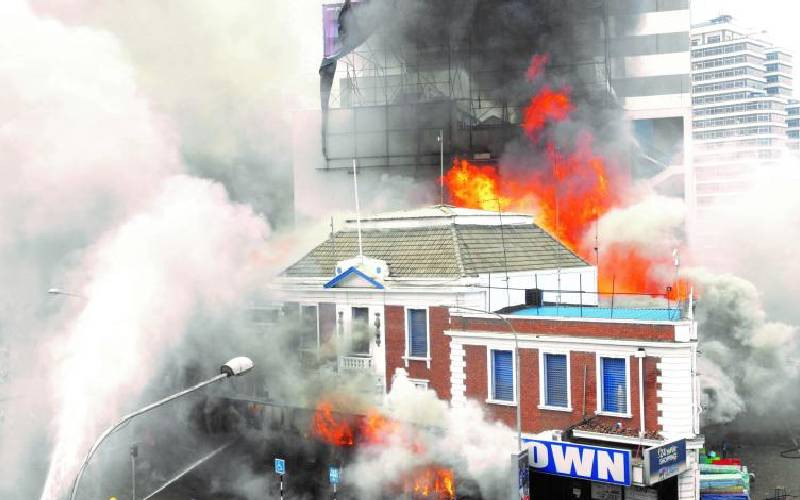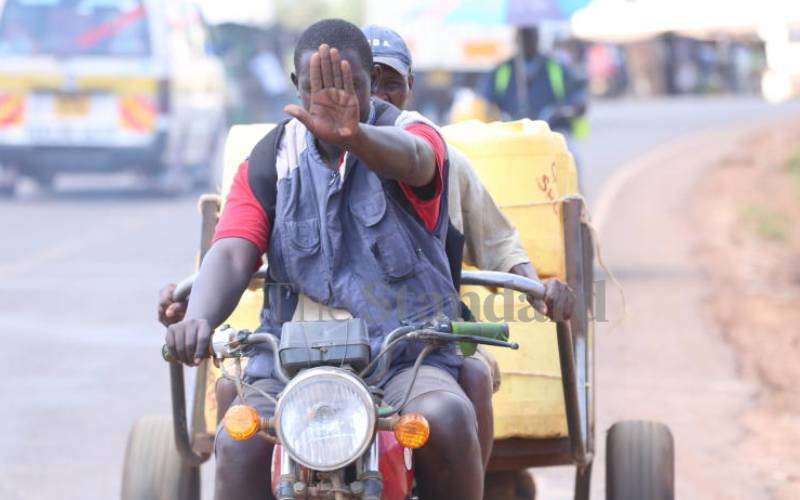By LUKE ANAMI and TIMOTHY MACHI
The Kenya Sugar Board has ignited a bitter storm in the western Kenya sugar belt, Business Weekly can reveal.
This follows the licensing of three sugar firms to construct and run milling plants in Busia County.
Business Weekly has established that by last Friday, Kenya Sugar Board (KSB) had licensed West Kenya Sugar Company, Cherry Sugar Investments Ltd through its subsidiary called Mundika Sugar Company Ltd and Africa Polysack Ltd to build milling plants in the region.
The region’s sugar belt includes more than 800 acres of Government land, which had been set aside for a proposed factory and nucleus sugarcane estate in 1990s and covers the entire Busia County, edging into parts of Teso District, Siaya County as well as lower parts of Bungoma County.
According to a letter to Agriculture PS, Dr Romano Kiome, five firms had applied to set up milling plants in Nambale — the epicentre of the latest incursions in the region.
They include African Polysack Ltd, Cherry Sugar Investment Ltd, West Kenya Sugar Company, Kaplony Ltd, and Pan African Millers.
But the process of identification of the three has not been without questions. African Polysack Ltd, which was found to have the best mill and cane development plan, was initially excluded from the process.
According to an official from African Polysack Ltd, they were instead issued with a licence to operate a sugar factory in Nyanza County — an area they were not interested in.
Feasibility study
“During a meeting of Monday July 9, 2012, Mkok told us that KSB was going to issue us with a licence to construct and operate a sugar factory in Siaya,” said the official.
“We declined the offer because we had not done any feasibility study concerning the viability of such a project in Siaya nor had the board or the ministry of agriculture.”
A survey conducted by the ministry of Agriculture early this year showed that Busia County has a capacity to produce between 3,000 and 5,000 tonnes of sugar.
Land under cane in the County is about 11,000 ha. Of this, Mumias controls about 75 per cent while private farmers hold the remaining 25 per cent. Land that is viable but not yet under cane is 15,000 ha.
The move by KSB to license the three firms has therefore re-ignited turf wars in the sugar sector.
At the centre of the storm is the argument that locating three firms within a radius of less than 10km of each other flouts the Kenya Sugar Board (KSB) Act.
According to the Act, no sugar factory shall be built within less than 40km radius of each other.
While Mumias is 42km from Nambale, the designated operational base of the proposed millers, Mumias has already contracted more than 60 per cent of the farmers in the region.
Cane poaching
“Unless the decision is reversed, the licensing will without doubt exacerbate the current problem of cane poaching at the expense of farmers in the long run,” says
Stephen Omuse, Chairman, Busia Outgrowers Company.
There have been confrontations between millers revolving around poaching of sugarcane from farmers who are contracted to supply their crop to companies like Butali Sugar, Mumias and Nzoia Sugar.
While officials at KSB remain cagey on the wisdom of their latest move, a trail of paperwork tells of powerful forces behind the licensing of some of the millers.
In its letter to Dr Romano, KSB had earlier questioned the real owners of Cherry
Sugar Investment Ltd, a Mauritanian company that applied for licensing through its local subsidiary called Mundika Sugar Company Ltd.
“As at December 16, 2011, no formal application forms had been submitted to reveal the actual directors of Cherry Sugar Investment or its local subsidiary Mundika Sugar Company Ltd,” the letter read in part, raising doubts about the real ownership of the miller.
Even with these details and an acknowledgement that full disclosure should characterise any transaction that involves public interest, KSB went ahead and licensed the shadowy miller.
While a KSB letter dated January 5, 2012, to Dr Romano had initially recommended the licensing of the two most responsive applicants, Business Weekly can reveal that last minute intervention last Friday saw the licensing of West Kenya Sugar Company Ltd as the third miller in the region.
According to the document that made the recommendations, West Kenya Sugar Company Ltd was yet to submit a formal application at the time and so its qualification for licensing was highly unlikely.
“The board in its conclusion found the application of West Kenya and Kaplony to be incomplete and did not therefore satisfy the requirements for mill registration,” says a member of KSB who did not want to be identified.
Whiff of politics
“That it was licensed in a huff and as a last minute consideration tells of a whiff of political influence seeking to manipulate the process,” he says.
In its technical evaluation report, KSB described West Kenya’s milling technology as old, non-expandable and somewhat out-dated.
“...the firm’s Tonnes of Cane Crushed Daily (TCD) is based on the 2,500 old plant, which was replaced at its Malava site in Kakamega County after acquisition of a modern miller.”
According to a source at KSB, this mill is no more than a jaggery and one that creates more waste than sugar.
In a past interview, KSB Chief Executive Rose Mkok said West Kenya also holds a milling licence for Bilibili area near Kamukuywa in Bungoma County, but is yet to establish a sugar factory three years after the licence was issued.
Business Weekly has since established that it is the same old mill that had earlier been earmarked for the Kamukuywa plant that is now set to be installed in Busia.
At 1,250 TCD, Cherry Sugar Investment Ltd, another licensed firm submitted the smallest capacity mill.
Indications that all was not well came up last Tuesday when an official from KSB made a detour of Busia region on a fact-finding mission and to assess parcels of land said to have been bought by the applicants.
In his findings, Eng Richard Magero noted that while Africa Polysack were able to show their piece of land in Busibwabo area, West Kenya and Cherry clashed when each of them produced a title of the same piece of land in Busende area. Despite these findings, the two firms have been licensed.
Massive goodwill
The two firms have both written to KSB accusing each other over the real ownership of the said piece of land.
Omuse says crowding three millers in one zone within touching distance will make worse the current menace of cane poaching. Already, Mumias is fighting to fend off cane poachers from millers with insufficient cane under the territory.
But even before the recent development, KSB had already sanctioned West Kenya to construct a weighbridge in Olepito in Nambale — an area the miller neither had its own sugarcane or nor contracted farmers.
This arose in the wake of revelations that West Kenya’s milling plant in Malava operates at merely 40 per cent of its full capacity due to sugarcane shortage.
Omuse says its construction of a weighbridge in Nambale therefore opens the area to fast growing cane poaching at the detriment of millers that have invested heavily in cane development.
“The main problem is that some of the licensed companies do not have any farmers contracted to it nor have they invested in cane development programmes with the farmers even in areas they have been operating for years,” he says.
He is now calling on the Government to re-evaluate the firms on the basis of their capacity and past records in the business.
 The Standard Group Plc is a multi-media organization with investments in media
platforms spanning newspaper print operations, television, radio broadcasting,
digital and online services. The Standard Group is recognized as a leading
multi-media house in Kenya with a key influence in matters of national and
international interest.
The Standard Group Plc is a multi-media organization with investments in media
platforms spanning newspaper print operations, television, radio broadcasting,
digital and online services. The Standard Group is recognized as a leading
multi-media house in Kenya with a key influence in matters of national and
international interest.
 The Standard Group Plc is a multi-media organization with investments in media
platforms spanning newspaper print operations, television, radio broadcasting,
digital and online services. The Standard Group is recognized as a leading
multi-media house in Kenya with a key influence in matters of national and
international interest.
The Standard Group Plc is a multi-media organization with investments in media
platforms spanning newspaper print operations, television, radio broadcasting,
digital and online services. The Standard Group is recognized as a leading
multi-media house in Kenya with a key influence in matters of national and
international interest.









